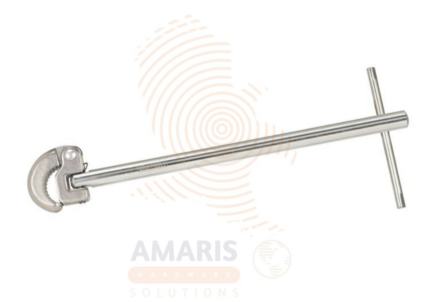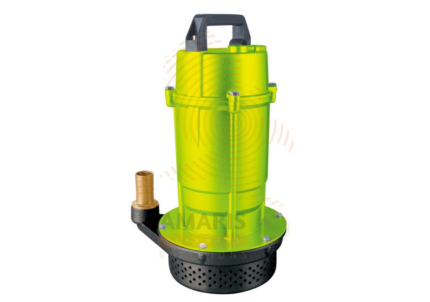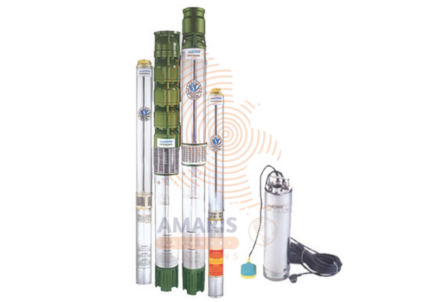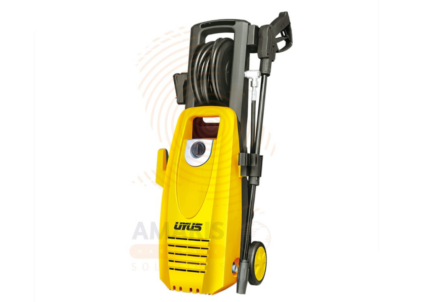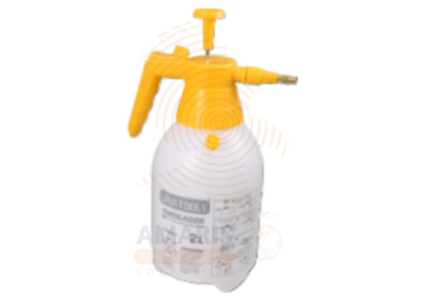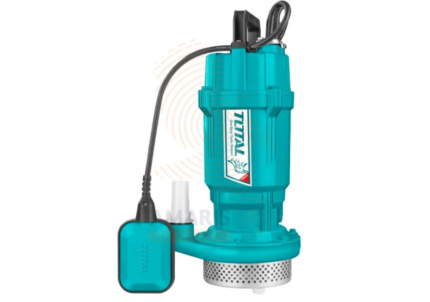Hand Pump
WhatsApp Order
PRODUCT DESCRIPTION
A hand pump is a manually operated device designed to draw or move fluids, typically liquids, from one place to another by using human force. It usually consists of a handle or lever that is manually operated to create suction or pressure, enabling the pumping action to transfer the fluid through a system of valves and pipes. Hand pumps are commonly used for various applications, such as extracting water from wells, transferring liquids between containers, or dispensing fluids in a controlled manner.
Description
Uses of a HAND PUMP
- Water Extraction from Wells:
- Hand pumps are widely used to draw water from wells, boreholes, or other underground water sources in areas where electrical or motorized pumps may not be practical or available.
- Emergency Water Supply:
- Hand pumps are crucial in emergency situations or during power outages, providing a manual and reliable means of accessing water for drinking, cooking, and sanitation.
- Community Water Supply:
- In rural or remote areas, hand pumps are often employed as community water supply systems, allowing residents to access clean water without the need for complex infrastructure.
- Agricultural Irrigation:
- Hand pumps can be used for small-scale irrigation purposes, providing a simple and cost-effective solution for farmers in areas with limited water resources.
- Fluid Transfer:
- Hand pumps are used to transfer various liquids, such as fuels, oils, and chemicals, between containers or from storage tanks to equipment.
- Laboratory Applications:
- Hand pumps are employed in laboratories for precise fluid dispensing, especially when dealing with small quantities of liquids that require manual control.
- Boat Bilge Pumping:
- Hand pumps are commonly used on small boats to remove accumulated water from the bilge to prevent flooding.
- Construction and Mining:
- Hand pumps may be used in construction and mining activities to remove excess water from excavation sites or to transfer fluids within a localized area.
- Hydraulic Testing:
- Hand pumps are used in hydraulic systems for testing and calibration purposes, allowing for the manual pressurization of hydraulic circuits.
- Oil and Fuel Extraction:
- In situations where small-scale extraction of oil or fuel is required, hand pumps can be used to transfer these liquids from containers or reservoirs.
- Emergency Response and Disaster Relief:
- Hand pumps are crucial in disaster-stricken areas where traditional infrastructure may be compromised, providing a reliable means of accessing water for affected communities.
SAFETY HANDLING PRECAUTIONS
Safety measures and precautions
- Read the User Manual:
- Familiarize yourself with the manufacturer's instructions and guidelines provided in the user manual. This will give you a clear understanding of how to operate the hand pump safely.
- Inspect the Pump:
- Before use, inspect the hand pump for any visible damage, leaks, or wear. Ensure that all components, including seals and valves, are in good condition. If you notice any issues, repair or replace the pump as needed.
- Proper Installation:
- Install the hand pump according to the manufacturer's specifications. Follow proper procedures for connecting hoses, pipes, and other components. Ensure a secure and stable installation to prevent accidents.
- Use Appropriate Pump for the Application:
- Ensure that the hand pump you are using is suitable for the type of fluid you are handling. Using the wrong pump for a particular application can lead to malfunction and potential safety hazards.
- Secure Pumping Area:
- Clear the area around the hand pump to prevent tripping hazards. Make sure there are no obstacles or obstructions that could interfere with the operation of the pump.
- Personal Protective Equipment (PPE):
- Depending on the application, wear appropriate personal protective equipment such as gloves and eye protection to safeguard against potential splashes, spills, or contact with harmful substances.
- Proper Body Position:
- Stand in a stable and balanced position while operating the hand pump. Avoid awkward postures that could lead to strain or injuries. Use your body weight efficiently to operate the pump handle.
- Regular Maintenance:
- Implement a regular maintenance schedule as recommended by the manufacturer. Lubricate moving parts, inspect seals, and replace worn components to ensure the pump operates smoothly and safely.
- Emergency Shut-off Procedures:
- Be familiar with emergency shut-off procedures in case of malfunctions, leaks, or other unexpected issues. Knowing how to quickly stop the pump can prevent accidents and minimize damage.
- Training and Supervision:
- Ensure that individuals operating the hand pump are properly trained and supervised, especially if it's a communal or workplace setting. This helps prevent misuse and enhances overall safety.
- Monitor Fluid Levels:
- When pumping fluids, be aware of the fluid levels in both the source and destination containers. Avoid overfilling, which could lead to spills or leaks.
- Secure Hoses and Connections:
- Check that hoses and connections are secure before and during operation. Loose or improperly connected components can lead to leaks or sudden disconnections.
Related products
Basin Wrench with Fixable Head
A Basin Wrench with Fixable Head is a specialized plumbing tool designed for the installation and removal of nuts in confined spaces, particularly in and around basins and sinks. The tool features an adjustable and fixable head, allowing the user to set it at different angles for versatile use in tight quarters. The wrench typically has a long handle and a pivoting jaw with a spring-loaded mechanism, enabling it to grip and turn nuts located in hard-to-reach areas. The fixable head feature ensures stability and ease of use, making it a valuable tool for plumbing tasks in areas with limited access.
Clean Water Submersible Pump
The Clean Water Submersible Pump is designed for efficient water transfer in residential, commercial, and light industrial applications. Engineered to handle clean, debris-free water, this submersible pump ensures reliable performance, high flow rates, and long-lasting durability. Its compact design allows for easy installation in wells, tanks, and sumps, while the corrosion-resistant materials provide enhanced longevity. Ideal for irrigation, water supply, and drainage tasks, this pump combines efficiency with quiet operation, making it a dependable solution for your water handling needs.
Electric Submersible Pump
An electric submersible pump (ESP) is a pump designed to operate while fully submerged in water or other fluids. It uses an electric motor sealed within a watertight casing to push fluid to the surface, making it ideal for draining, irrigation, sewage treatment, and various industrial applications. ESPs are valued for their efficiency, reliability, and ability to handle deep water extraction, providing a steady flow even from significant depths.
High pressure washer
A High pressure washer, rated at 2000 watts, is a powerful cleaning device designed for various applications, such as cleaning surfaces, vehicles, outdoor spaces, and more. The "2000W" indicates the power consumption or wattage of the washer, suggesting a robust motor that can generate high water pressure for effective cleaning. This type of pressure washer is likely to deliver strong water jets, making it suitable for tackling tough dirt, grime, and stains in residential or industrial settings. The versatility and efficiency of a 2000W high-pressure washer make it a popular choice for tasks that demand substantial cleaning power.
Pipe Cutter
PRODUCT DESCRIPTION
A pipe cutter is a specialized tool designed for cutting pipes cleanly and accurately. Typically used in plumbing and other pipe-related applications, a pipe cutter consists of a cutting wheel or blade that is rotated around the pipe's circumference, gradually creating a groove. The tool is then tightened or adjusted, and the cutting wheel is rotated again, gradually deepening the groove until the pipe is cleanly severed. Pipe cutters come in various designs, including manual, ratcheting, and powered versions, providing versatility for different pipe materials and sizes.
Pump Sprayer
A pump sprayer, also known as a hand pump sprayer or pressure sprayer, is a manually operated device designed for spraying liquids such as pesticides, herbicides, fertilizers, cleaning solutions, or water. It typically consists of a container to hold the liquid, a pump mechanism to pressurize the container, a wand or nozzle for directing the spray, and a handle for pumping and carrying. Users pressurize the container by manually pumping the handle, creating pressure that allows the liquid to be sprayed in a controlled manner when the nozzle is activated. Pump sprayers are commonly used in gardening, agriculture, pest control, and various household applications for targeted and even distribution of liquids.
Sewage submersible pump
A sewage submersible pump is a specialized type of pump designed for the efficient and reliable transfer of wastewater, sewage, or other contaminated fluids from one location to another. Unlike traditional pumps that are installed above ground, sewage submersible pumps are designed to be submerged in the fluid they are pumping. This submersible design allows the pump to operate efficiently in challenging environments, such as sewage systems, septic tanks, or other applications where the fluid may contain solids or debris.
These pumps are typically sealed to prevent water or sewage from entering the motor and other internal components. They often feature robust construction and materials to withstand the corrosive and abrasive nature of sewage. Sewage submersible pumps play a crucial role in wastewater management, helping to transport sewage from homes, businesses, and industrial facilities to treatment plants or disposal sites.
Teflon Thread Sealing Tape
A Teflon thread sealing tape, also known as plumber's tape or PTFE tape (polytetrafluoroethylene tape), is a thin, white, non-sticky tape used to seal threaded pipe joints. It is commonly employed in plumbing and pipefitting applications to create a tight and leak-free seal between threaded connections, such as those found in pipes, fittings, and valves. The tape is wrapped around the threads of the male pipe before it is screwed into the female fitting. Teflon tape provides lubrication for easier assembly while forming a seal that helps prevent leaks and enhances the integrity of the connection. The non-stick properties of Teflon make it resistant to sticking or binding when the joint is later disassembled.


 Acrylic Sealants
Acrylic Sealants Construction Adhesives
Construction Adhesives Double-Sided Tape
Double-Sided Tape Duct Tape
Duct Tape Electrical Tape
Electrical Tape Epoxy & Resins
Epoxy & Resins Masking Tape
Masking Tape
 Automotive Wrenches & Socket Sets
Automotive Wrenches & Socket Sets Battery Chargers & Jump Starters
Battery Chargers & Jump Starters Car Jacks & Stands
Car Jacks & Stands Car Wash & Detailing Products
Car Wash & Detailing Products Diagnostic Tools
Diagnostic Tools Tire Inflators
Tire Inflators Vehicle Lighting
Vehicle Lighting Oil & Lubricants
Oil & Lubricants
 Adhesives & Sealants
Adhesives & Sealants Bricks & Blocks
Bricks & Blocks Cement & Concrete
Cement & Concrete Drywall & Plaster
Drywall & Plaster Flooring (Tiles, Wood, Laminate)
Flooring (Tiles, Wood, Laminate) Lumber & Plywood
Lumber & Plywood Paints, Primers & Coatings
Paints, Primers & Coatings Insulation Materials
Insulation Materials Roofing Materials
Roofing Materials
 Circuit Breakers
Circuit Breakers Electrical Cables & Wires
Electrical Cables & Wires Switches & Sockets
Switches & Sockets Fuses & Relays
Fuses & Relays Connectors & Terminals
Connectors & Terminals Electrical Boxes & Panels
Electrical Boxes & Panels Conduit & Fittings
Conduit & Fittings Lighting Fixtures & Bulbs
Lighting Fixtures & Bulbs Extension Cords & Power Strips
Extension Cords & Power Strips
 Anchors
Anchors Bolts
Bolts Clips & Clamps
Clips & Clamps Screws
Screws Nuts
Nuts Washers
Washers Rivets
Rivets Nails
Nails Threaded Rods
Threaded Rods
 Hammers
Hammers Measuring Tools (Tapes, Levels, Calipers)
Measuring Tools (Tapes, Levels, Calipers) Screwdrivers
Screwdrivers Pliers & Cutters
Pliers & Cutters Saws & Blades
Saws & Blades Chisels & Punches
Chisels & Punches Allen Keys & Hex Keys
Allen Keys & Hex Keys Ratchets & Socket Sets
Ratchets & Socket Sets Wrenches & Spanners
Wrenches & Spanners
 Power Tool Accessories (Blades, Bits, Discs)
Power Tool Accessories (Blades, Bits, Discs) Rotary Tools
Rotary Tools Saws (Circular, Jigsaw, Reciprocating)
Saws (Circular, Jigsaw, Reciprocating) Drills & Drivers
Drills & Drivers Grinders & Sanders
Grinders & Sanders Heat Guns
Heat Guns Nail Guns
Nail Guns Impact Wrenches
Impact Wrenches Batteries & Chargers
Batteries & Chargers
 Pipes & Fittings (PVC, Copper, PEX)
Pipes & Fittings (PVC, Copper, PEX) Plumbing Tools
Plumbing Tools Pumps & Motors
Pumps & Motors Sealants & Adhesives for Plumbing
Sealants & Adhesives for Plumbing Valves & Taps
Valves & Taps Water Heaters
Water Heaters Drainage Systems
Drainage Systems Faucets & Fixtures
Faucets & Fixtures Hoses & Tubing
Hoses & Tubing
 Hinges & Latches
Hinges & Latches Hooks & Brackets
Hooks & Brackets Window Hardware
Window Hardware Chains & Cables
Chains & Cables Casters & Wheels
Casters & Wheels Shelving & Storage Systems
Shelving & Storage Systems Door Handles & Locks
Door Handles & Locks Drawer Slides & Cabinet Hardware
Drawer Slides & Cabinet Hardware
 Personal Protective Equipment (PPE)
Personal Protective Equipment (PPE) Respirators & Masks
Respirators & Masks Safety Glasses
Safety Glasses Safes
Safes Security Cameras
Security Cameras Gloves
Gloves Helmets
Helmets Ear Protection
Ear Protection Fire Safety Equipment
Fire Safety Equipment Locks & Padlocks
Locks & Padlocks Motion Sensors & Alarms
Motion Sensors & Alarms
 Garden Fencing
Garden Fencing Garden Furniture Hardware
Garden Furniture Hardware Lawn Mowers
Lawn Mowers Trimmers & Edgers
Trimmers & Edgers Shovels & Spades
Shovels & Spades Rakes & Hoes
Rakes & Hoes Pruning Shears & Loppers
Pruning Shears & Loppers Watering Systems (Hoses, Sprinklers, Nozzles)
Watering Systems (Hoses, Sprinklers, Nozzles)
 Interior Paints
Interior Paints Paint Brushes & Rollers
Paint Brushes & Rollers Paint Strippers & Thinners
Paint Strippers & Thinners Paint Trays & Accessories
Paint Trays & Accessories Exterior Paints
Exterior Paints Spray Paints
Spray Paints Primers & Undercoats
Primers & Undercoats Varnishes & Stains
Varnishes & Stains
 Gaskets & Seals
Gaskets & Seals Hydraulic Fittings
Hydraulic Fittings Industrial Fasteners
Industrial Fasteners Industrial Hoses
Industrial Hoses Lubricants & Greases
Lubricants & Greases Metal Sheets & Bars
Metal Sheets & Bars Bearings & Bushings
Bearings & Bushings Belts & Pulleys
Belts & Pulleys
 HVAC Filters
HVAC Filters Insulation for HVAC
Insulation for HVAC Air Conditioners
Air Conditioners Refrigerants
Refrigerants Ventilation Ducts & Fittings
Ventilation Ducts & Fittings Thermostats & Controllers
Thermostats & Controllers Fans & Blowers
Fans & Blowers
 Pegboards & Hooks
Pegboards & Hooks Shelving Units
Shelving Units Storage Bins & Containers
Storage Bins & Containers Toolboxes & Tool Chests
Toolboxes & Tool Chests Workbenches
Workbenches Drawer Organizers
Drawer Organizers Labeling Supplies
Labeling Supplies
 Welding Accessories (Clamps, Brushes)
Welding Accessories (Clamps, Brushes) Welding Electrodes & Rods
Welding Electrodes & Rods Welding Helmets & Gloves
Welding Helmets & Gloves Welding Machines
Welding Machines Soldering Irons & Stations
Soldering Irons & Stations Flux & Solder Wire
Flux & Solder Wire
 Generator Accessories
Generator Accessories Inverters
Inverters Portable Generators
Portable Generators Power Inverters
Power Inverters Transfer Switches
Transfer Switches Diesel & Gasoline Generators
Diesel & Gasoline Generators
 Transport Equipment: Carts, Dollies, and Hand Trucks
Transport Equipment: Carts, Dollies, and Hand Trucks Storage Solutions: Pallets, Racks, and Containers
Storage Solutions: Pallets, Racks, and Containers Lifting Equipment: Hoists, Cranes, and Jacks
Lifting Equipment: Hoists, Cranes, and Jacks Conveyors and Accessories: Belts and Rollers
Conveyors and Accessories: Belts and Rollers

